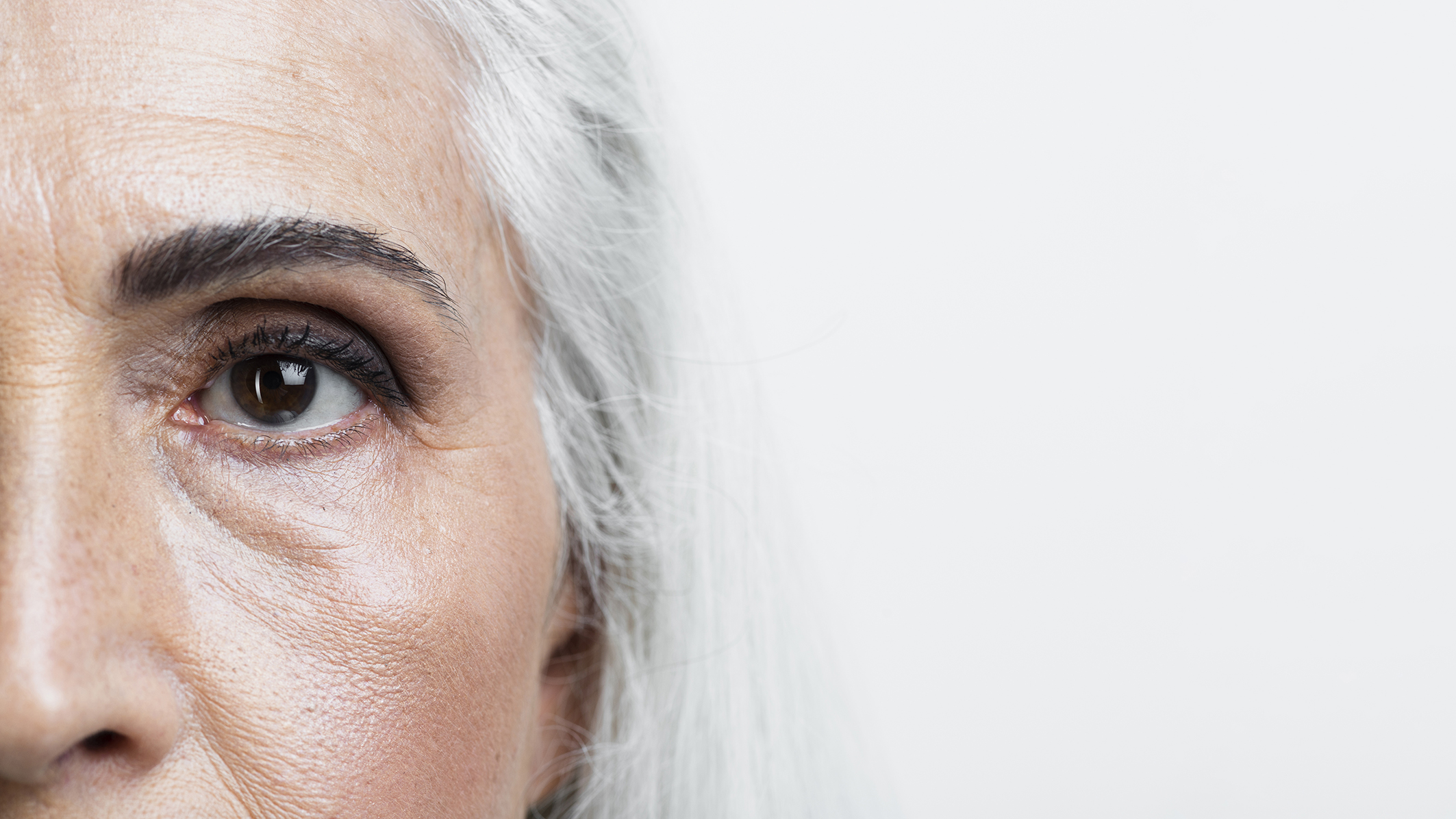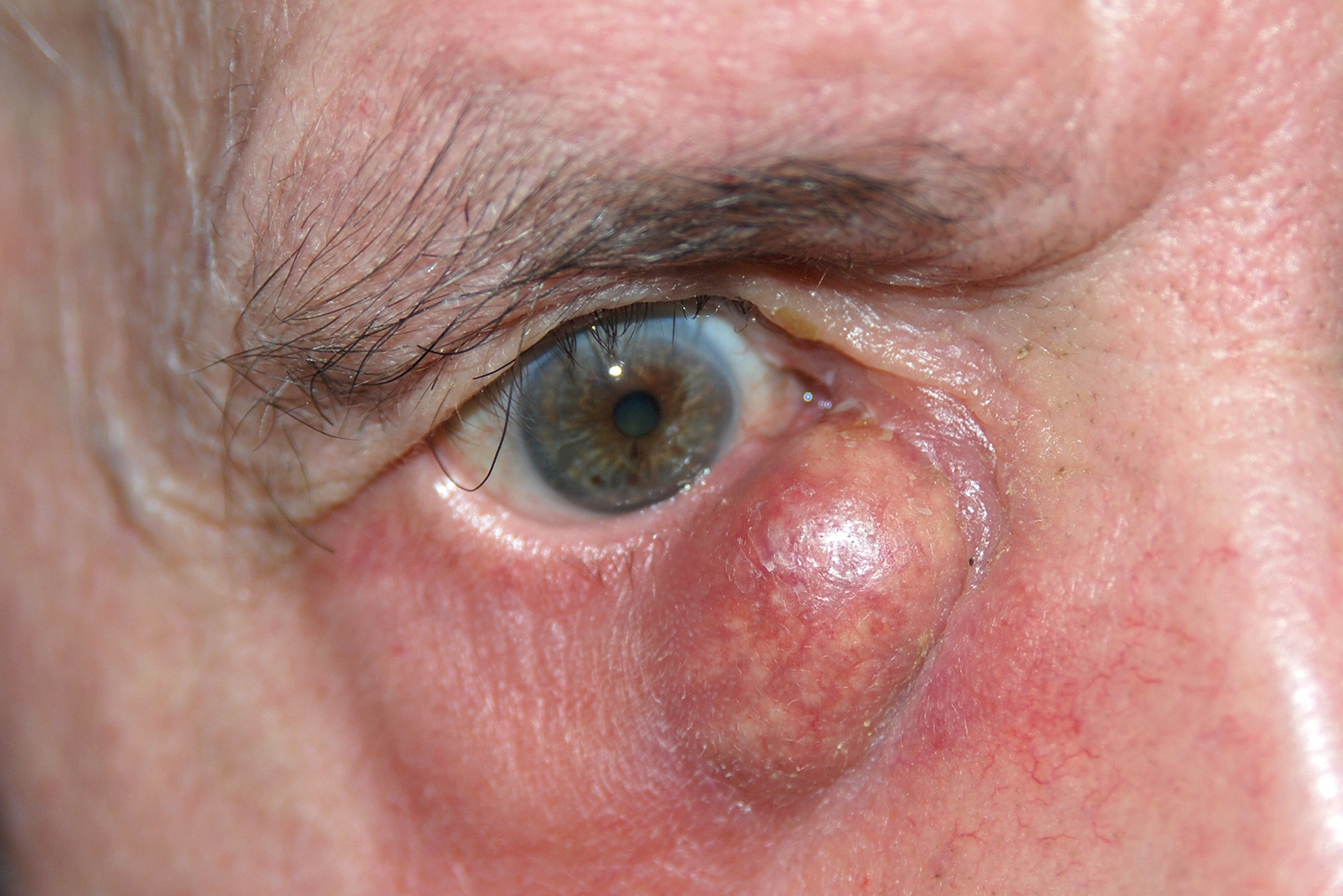Entropion
When the edge of the eyelid is turned inwards, the conjunctiva is no longer in contact, but rather the edge of the eyelid with the eyelashes or even the outer lid skin with the eyeball. The constant rubbing of the eyelashes on the eyeball represents a permanent foreign body stimulus, so that there is increased redness and increased tearing. If an entropion remains untreated for a long time, there is a risk of corneal damage or even a corneal ulcer.
Causes
Usually there is increased muscle tension in the fibers of the lid sphincter near the edge of the lid. This mainly occurs in old age, but also occurs e.g. B. after injuries (scar entropion) or chronic inflammation.
Ectropion
Ectropion refers to the tilting of the lid margin outward. The lower eyelid is almost exclusively affected. The most common cause is age-related slackening of the ligaments and the lid plate, so that the lower eyelid tilts outwards according to the force of gravity. The lack of or incomplete eyelid closure leads to symptoms of dehydration in the cornea and constant tears running down the cheek with a risk of infection.
Causes
The most common cause is the change in age of the lid structures (sagging of the lid skin, defect in the lid's suspension system). Injuries (scar nectropion) or nerve damage (e.g. facial paralysis) can also be responsible.
Blepharochalasis
Blepharochalasis is an age-related slackening of the upper eyelid skin. The excess of the eyelid skin can lead to a feeling of heavy eyelids and also to visual field restrictions
Ptosis
The drooping (ptosis) of one or both eyelids is caused by paralysis of the eyelid lifter, muscular weakness, or weak connective tissue. Treatment of acquired ptosis depends on the underlying disease.
Treatment of the eyelid misalignment
Conservative therapy (eye drops or eye ointment) is often not sufficient, so that the eyelid malposition can only be corrected through surgical treatment.
Lid tumors
The cause of eyelid tumors can be inflammation or new tissue formation. The duration and change of the tumor are important in the assessment. Depending on the findings, photo documentation with regular follow-up controls (e.g. in the case of a nevus) may be sufficient.
Surgical removal with a tissue examination (excisional biopsy) should be performed if the tumor increases in size, leads to functional disorders, or if malignant new tissue formation is suspected. the most common tumors of the eyelid are hailstone (chalazion) and with increasing age the basalioma.
Blood thinning medication
Before each lid operation, you should tell your doctor whether you are taking blood-thinning medication (Marcumar, Plavix, ASS, Apirin, etc.). In the vast majority of cases it will be necessary to stop this before the operation - after consulting your family doctor. If necessary, temporary "abdominal injections" with heparin or similar are necessary.




